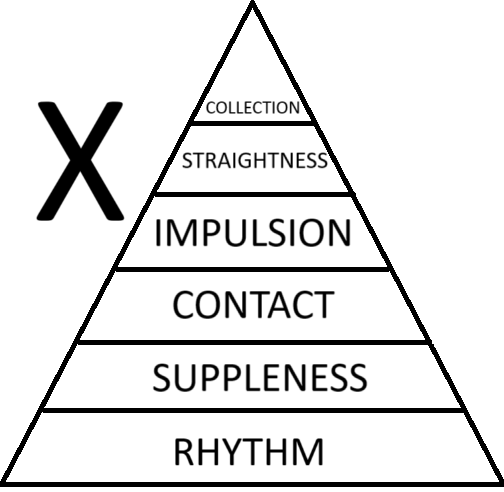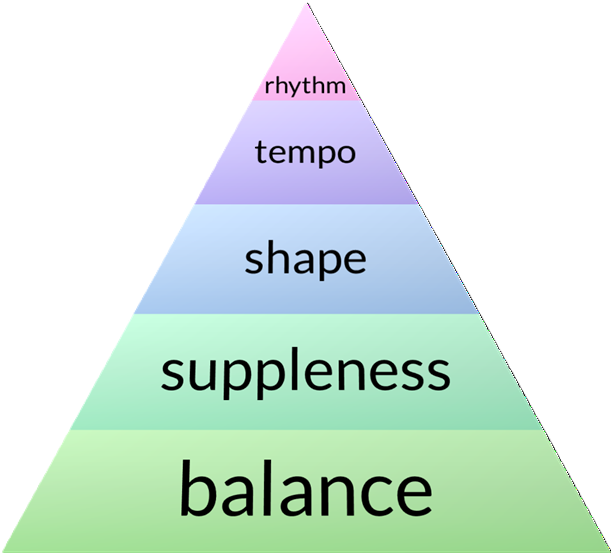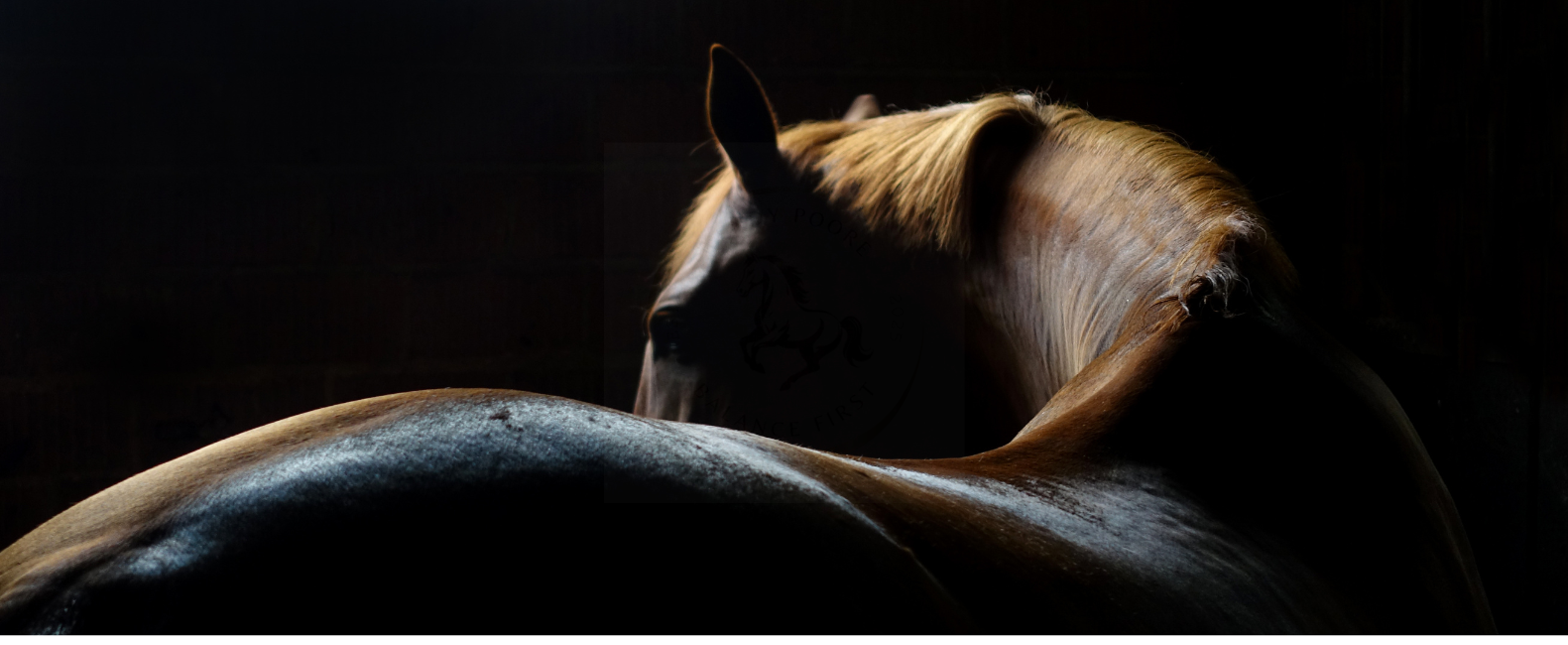Why balance first?
Two of the most common causes of behavioural problems with horses are misunderstanding and natural asymmetry. Unresolved, they cause untold pain and suffering to both horses and riders.
When horses are not properly prepared to be ridden, they do their best to do as we ask, but they very often are literally not able to do it.
When a horse that is not straight is asked to canter on a circle, they might feel like they are literally going to fall over.
Or they might feel like it's impossible to move.
Or to bend.
Or to lower their head.
What usually happens then is that the trainer puts more pressure on, uses more equipment, stronger bits, spurs, gadgets and tie-downs.
Instead of harmonious communication, it becomes like a battleground.
The suffering is often unspoken, unheard or unseen.
This is why it is vital to teach the horse to Balance First
- physically
- mentally, and
- emotionally.
Balance is the key to everything.
Equally, problems can be caused when the human is out of balance physically, mentally or emotionally.

The commonly used dressage training scale
This widely used dressage training scale starts with rhythm and suppleness and finishes with straightness and collection. But when a horse is weak and unbalanced under a rider, it is virtually impossible to find suppleness and rhythm.
In fact, asking a horse that is not even able to carry himself in balance to carry a rider in a normal tempo and rhythm causes stiffness, pain and conflict. The horse simply cannot physically do it and does not feel safe. This in turn causes injuries as well as mental and emotional problems.

The training scale
This is the training scale we use in Balance First. Balance forms the foundation for the other four elements.
When a horse is able to move in balance he naturally becomes more relaxed and supple, and very soon is able to bend equally to the left and right.
He learns to carry himself in a healthy shape, using all four legs equally, and engaging his core muscles.
We add a normal tempo and rhythm only when the horse is able to support himself and stay in balance at slower tempos.
This training scale leads to straightness in the horse.
